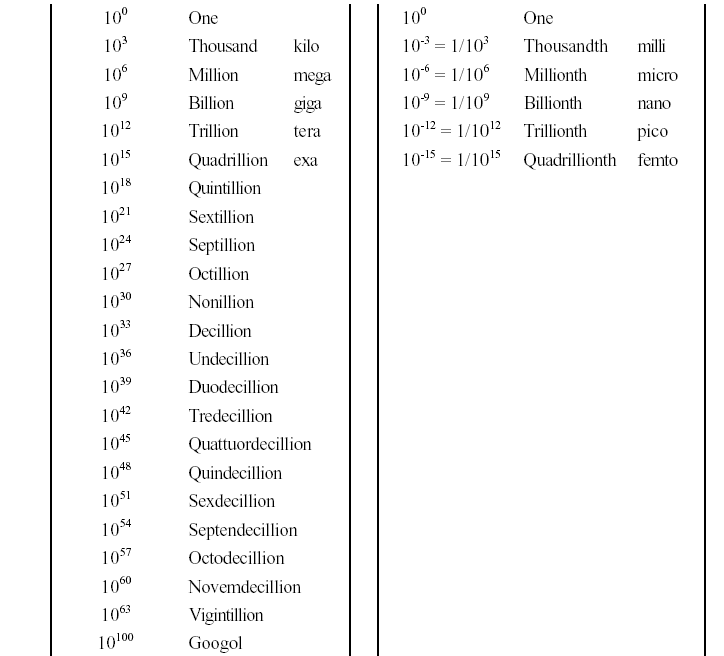Exponents and Powers of Ten
To write one million as a numeral takes a 1 and six 0’s: 1,000,000.
To write one billion, you use a 1 and nine 0’s: 1,000,000,000.
One trillion is even larger and uses three more 0’s: 1,000,000,000,000.
Large numbers have always been interesting to mathematicians. Writing
lots of zeros is not so interesting. There is a way to write abbreviations for
large numbers, without all those pesky zeros!
- One million (1,000,000) can be written 106.
- One billion (1,000,000,000) can be written 109.
- One trillion (1,000,000,000,000) can be written 1012.
The little number is the same as the number of zeros, and is called an exponent. An exponent
tells how many times to multiply the other number, called the base, by itself. So 106 equals 10
× 10 × 10 × 10 × 10 × 10, and that equals 1,000,000. (You can check this on your
calculator.)
To read a power of ten, such as 1,000, you can say “one thousand†or “ten to the third
power.†One million is “ten to the sixth power.â€
With numbers that aren’t exactly a power of ten, 13 million (13,000,000) for example,
mathematicians use shorthand that still uses exponents with ten as the base. Since 13 million is
13 times 1 million, you can write it as 13 × 106. That’s a standard abbreviation called scientific
notation.
Exponents are especially useful when the powers of ten get even bigger. Here’s a chart that
shows how handy mathematical shorthand can be.


|